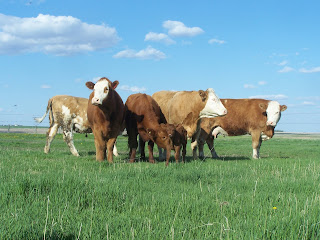 |
| One of my yearling ewes that was shown as a yearling without being bred. |
A yearling ewe is a female that is over a year old but under two years old. Yearling ewes may have already had lambs or they may have not been bred to allow them to have a year to grow and mature before they have babies. For this class, depending on the show, ewes may be shown with or without lambs at foot (their babies). The yearling ewe and her lambs, if they are being shown, must have a fleece that is under two inches in length.
What is the judge looking for?
In yearling ewes the judge is looking for good physical characteristics to pass on to the ewes offspring, conformation that will allow her to carry many lambs, longevity traits and what the current condition of the ewe. If the ewe has lambs the judge will also check the quality of the lambs she has raised and the number of the lambs she has.
Lambs inherit half of their genetics from their mom so in order for your ewe to produce good lambs for market she needs to have the traits of a champion market lamb herself. This includes length, width and depth of body as well as a large leg.
In order for the ewe to be able to hold multiple lambs during pregnancy she must have a large body capacity. This means she needs to have length, width and depth of body. The stomach, lungs and uterus (where the baby lambs develop) are all relatively close in the body of a ewe. As the pregnancy progresses the lambs grow and take up more space inside the ewe, so if she has a small body there will be less room for her the stomach and lungs. If the stomach is being squished the ewe will not be able to eat as much and won't get the nutrition that herself and her lambs need. If the lungs are restricted by the lambs she is carrying the ewe may not be able to properly breathe.
By the time the ewe is a yearling, any undesirable traits may have become more obvious. Her legs need to be set straight and squarely under her her body and her pasterns need to be strong. Her teeth also need to align with her upper gum. These things should have been checked as a ewe lamb so most yearling ewes who are show animals will not have any problems with their legs or teeth.
Upon the birth of her first lambs the ewe will develop an udder full of milk. Judges will check to see that the ewes udder is not damaged in any way. Damage to the udder could mean that milk will not be produced properly by the ewe which means her lambs will not be able to get the milk they need from their mother. When a ewe is unable to feed their lamb(s) it creates a very large headache for the person who owns her.
 |
| My yearling ewe and her twin lambs. |
The judge will also take into account the number of lambs the ewe has. The more lambs the more money you will make when you sell them.
















